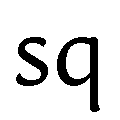

Volume 21 (2002)
Eutrophication problems and their potential Solutions
in the Artificial Shallow Lake Altmühlsee (Germany)
Christiane Schrenk-Bergt, Dieter Krause, Olaf Prawitt, Jörg Lewandowski, Christian E.W. Steinberg
Lake
Altmühlsee in Middle Franconia, Germany, was constructed as part
of a water transportation system and flooded in 1986 by River
Altmühl. Supply of nutrient rich water resulted in a hypertrophic
state characterized by low Secchi depth (<0.5 m in summer). Massive
blooms of phytoplankton in summer were mainly caused by cyanobacteria (Aphanizomenon flos-aquae, Anabaena flos-aquae, Microcystis aeruginosa) and by chlorophytes (Oocystis
ssp., Monoraphidium ssp.,
Planktosphaeria gelatinosa),
respectively. Fish assemblage was characterized by the dominance of
planktivorous bream. Hence, zooplankton community mostly consisted of
small-bodied cladocerans due to predation pressure by fish.
Investigations of the phosphorus (P) cycle of Lake Altmühlsee
revealed high P-turnover rates in the water body and at the immediate
sediment-water interface, an outstanding importance of external P-load,
and a minor importance of the internal P-load. The lake supports
recreational and social functions which, however, are restricted due to
the low water quality. Improvement of water quality is necessary to
increase attractiveness. Our study presents some proposals for an
effective and economically justifiable water quality management,
especially, biomanipulation in accordance to the holder of the fishing
rights and local establishment of macrophytes.
| Editor-in-Chief: | Tomasz Goslar |
| Co-Editors: | Małgorzata Latałowa Wojciech Stankowski Krystyna Szeroczyńska |
| Secretary |
Mariusz Lamentowicz |